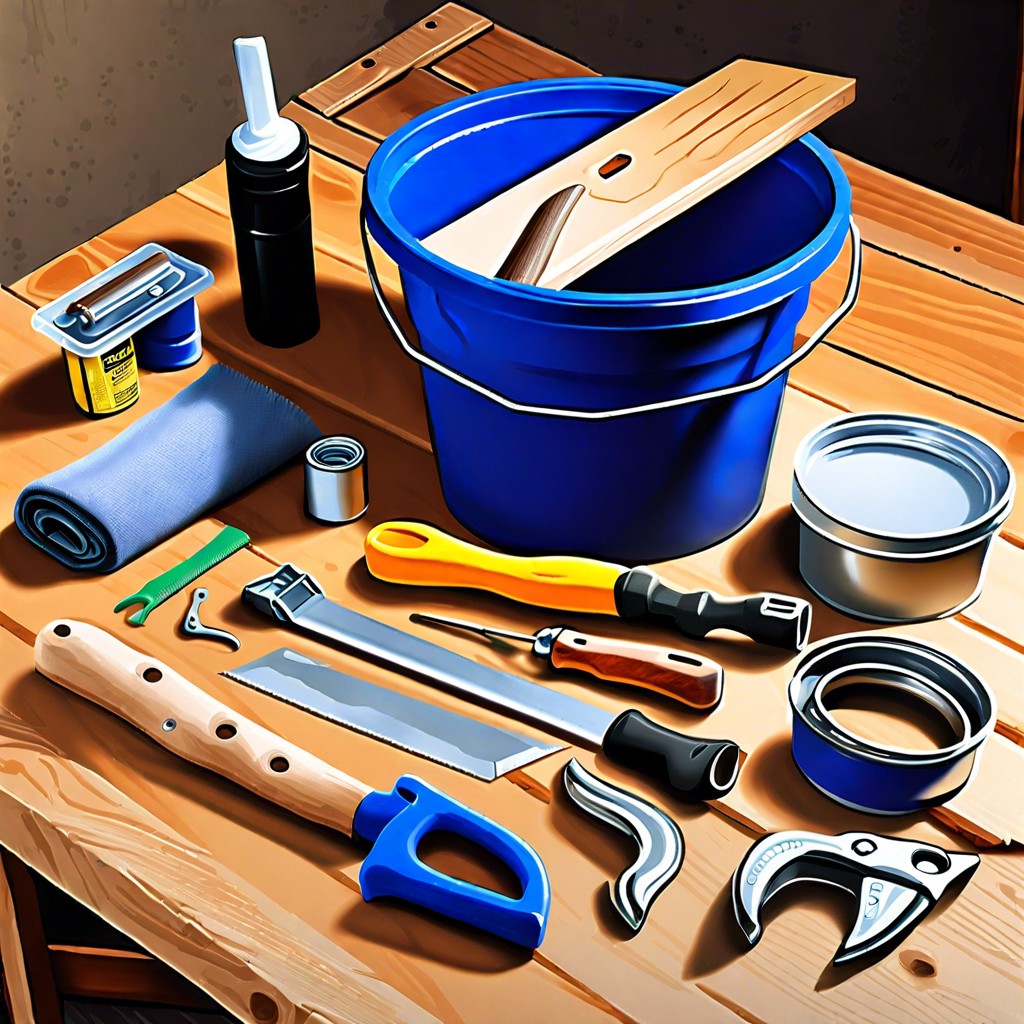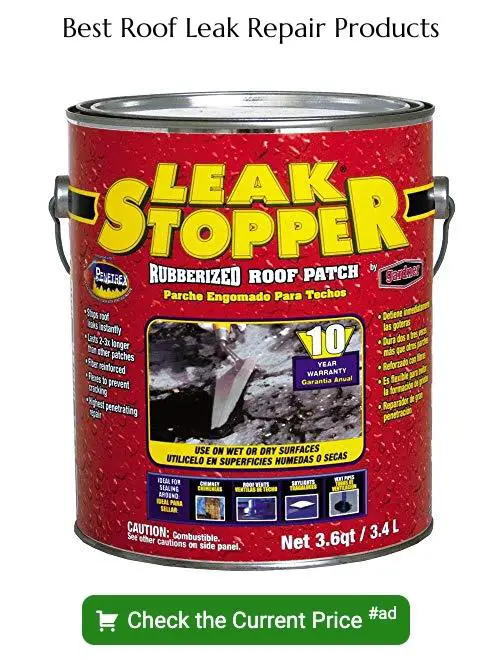Last updated on
In this comprehensive guide, you will determine how to address a leaking roof from the interior, learning step-by-step techniques to identify, limit and repair the damage efficiently.
Key takeaways:
- Gather necessary tools and materials.
- Locate the source of the roof leak.
- Minimize water damage with temporary fixes.
- Make a temporary patch using roofing tar.
- Costs for fixing a small roof leak can vary.
Tools You’ll Need

Before commencing repairs on a leaking roof from the inside, gather the following tools and materials:
- Bucket or container: Collect dripping water and minimize interior water damage.
- Plastic sheeting: Redirect water flow to a bucket or out a window.
- Plywood or board: Support the plastic sheeting in catching and diverting water.
- Roofing tar: Provide a temporary patch to plug the leak.
- Putty knife: Spread roofing tar with precision.
- Flashlight or headlamp: Illuminate dark attic spaces to locate the leak.
- Measuring tape: Measure the area that needs to be patched.
- Caulking gun: If using a tube-based sealant, ensure an even application.
- Gloves: Protect hands from tar and sharp edges during the repair process.
Having these items on hand will enable you to address the immediate issue effectively and reduce further damage to your home’s interior.
How to Find Roof Leaks
Locating the source of a roof leak can often be more challenging than the repair itself due to water traveling from the entry point. Start by examining the roof uphill from the stains, looking for roof penetrations. Items that penetrate the roof are the most common source of leaks. It’s rare for leaks to develop in open areas of uninterrupted shingles. Penetrations can include roof vents, dormers, chimneys, or anything else that projects through the roof.
If you have attic access, the easiest way to track down the leak is to go up there with a flashlight during rain. Look for evidence of water, such as stains, water marks, or mold growth, as these can point directly to the leak source. If it’s not raining, you can simulate rain with a garden hose while someone watches the inside of the attic for leaks.
In the absence of attic access, you’ll need to check the ceiling for signs. Look for discolorations, spots, and peeling paint. Water stains that extend across ceilings or run down walls can be a clear sign that water is entering the house and traveling away from the leak.
Remember, water can run along the rafters or trusses before dripping onto the ceiling, so don’t assume that a leak originates directly above the evidence. Once you identify a potential location, measure the distance from the leak to a reference point like a chimney, vent, or peak, giving you a starting point to inspect on the roof’s exterior.
Divert the Water
Upon locating the leak, immediate action centers on minimizing potential water damage inside your home. Position a container under the leak to catch the water. If the ceiling is bulging, puncture it in the center with a screwdriver or drill to relieve the water pressure. For a more controlled water diversion, fasten a piece of string to the leak point and lead the water into the bucket, reducing splashing and the spread of moisture. Remember, these steps are temporary fixes; consult a professional roofer for a permanent solution.
Make a Temporary Patch
Sealing a leak temporarily from the inside is a stopgap measure to minimize water damage until proper repairs can be made. After diverting any incoming water using a tarp or bucket, locate the source of the leak.
Clean the area around the leak to ensure the patch adheres properly. Use a piece of roofing tar with a putty knife and spread it over the hole or crack. Press a piece of plywood or shingle onto the tar and apply additional tar around the edges of your patch.
This quick fix is designed to provide immediate relief, but it is imperative to address roof repair externally as soon as possible for a long-term solution.
What Does It Cost to Fix a Small Roof Leak?
Repairing a small roof leak is generally more cost-effective than addressing the damage caused by a long-term leak. The cost can vary widely based on factors such as the roofing material, the extent of the damage, and your location.
Minor repairs that homeowners can perform using sealants or patches typically cost between $10 and $30 for materials.
Professional services may range from $150 to $400 for minor leaks. This includes finding the leak, sealing it, and ensuring no other vulnerable spots are present.
For more extensive damage, such as repairing underlayment or replacing shingles, the cost can increase to $500 or more.
Keep in mind that these are estimates; actual costs may vary. Always solicit multiple bids from reputable contractors to ensure a competitive price for your repair.
Remember, tackling a leak promptly can prevent more severe damage, which can be much more expensive to repair in the long run.
FAQ
Does Flex Seal work on roofs?
Yes, Flex Seal works effectively on roofs and has benefits such as covering large surface areas and UV resistance, provided the surface is dry before application.
Can I fix a roof from the inside?
Yes, a roof can be fixed from the inside, albeit this is considered a temporary solution and the underlying cause must still be addressed promptly to prevent potential long-term damage.
How do you fix a leaking roof without replacing it?
To fix a leaking roof without replacing it, you can apply a mixture of water and a powder akin to roofing cement into the damaged area, which upon drying, becomes solid and effectively prevents further water ingress.
What are the most effective materials used to repair a leaking roof from the inside?
The most effective materials used to repair a leaking roof from the inside are waterproof tape, roof sealant, and polyurethane foam.
Is it advisable to use sealants or patches for internal roof leaks?
Although sealants and patches can be a temporary solution for roof leaks, it’s advisable to seek professional repair for a long-term fix to prevent potential structural damage.
What risks are associated with fixing a roof leak from the inside?
Fixing a roof leak from the inside carries risks such as incomplete patching, potential structural damage over time, and increased risk of injury due to lack of proper workspace.





